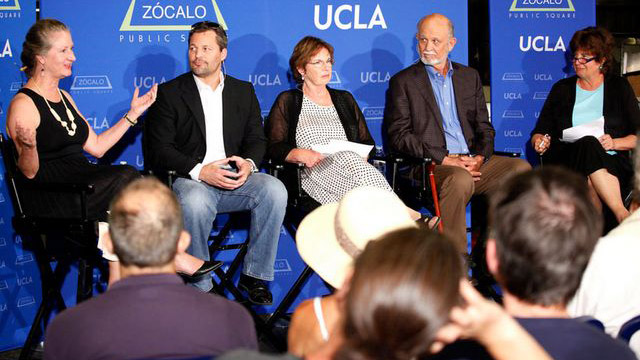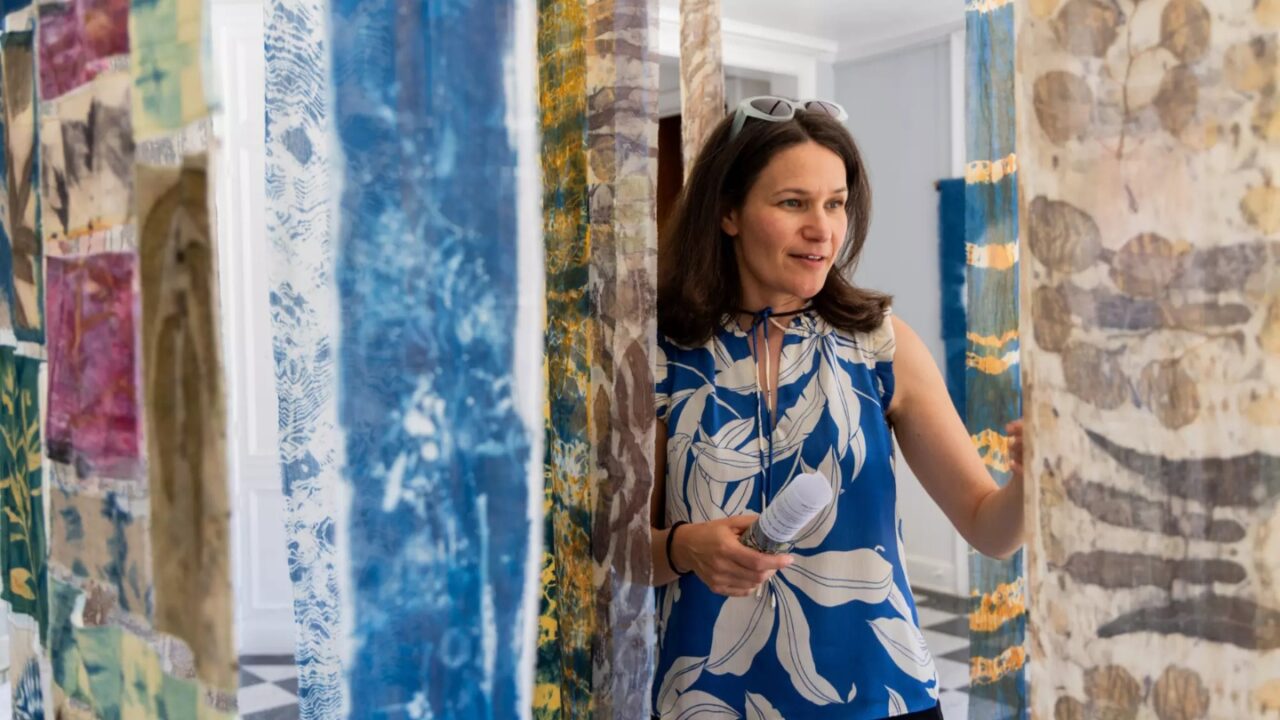
Can We Engineer Our Way Out of the Drought?
A UCLA-Zócalo panel agrees technology is there to quench state's thirst
By Paul Bisceglio
Originally posted in UCLA Newsroom
Californians are increasingly coming to terms with the fact that the drought isn’t going to end anytime soon and are looking for new ways to cope with it. From at-home metering devices to grand visions for pipelines to suck water from other sources, innovators, entrepreneurs, scientists and politicians have come up with wide-ranging ideas to ensure California doesn’t dry up.
What works? What doesn’t? What policies need to be put in place to encourage change and what can Californians do to help? Those are some of the questions that Madelyn Glickfeld, assistant director for outreach and strategic initiatives and director of the UCLA Water Resources Group at the UCLA Institute of the Environment and Sustainability, and UCLA civil engineering professor Eric Hoek discussed with two other panelists at a “Thinking L.A.” event co-presented Tuesday night by UCLA and Zócalo.
The four panelists took a broad look at the state of water technology in California and discussed both the importance and difficulty of implementing desalination plants, water-recycling facilities and other tools to help California make better use of its scarce water resources. Margot Roosevelt, a reporter at the Orange County Register, moderated the conversation for a standing-room-only crowd in downtown L.A.’s Grand Central Market.
They agreed the issue of drought was too complicated to merit any single technological solution — if technology is the ultimate answer at all.
“Technology is important, but it’s not a silver bullet,” said panelist Celeste Cantú, the general manager of the Santa Ana Watershed Project Authority. She argued that a “silver buckshot” approach is more appropriate. “We basically need ‘all of the above.’ Our relationship with water — how we use it, where we use it, how we landscape — is the biggest thing.”
Glickfeld pointed to water pricing as a major factor in dictating some of this use. “The technologies that are most promising are smart technologies — technologies that use smart sensors to help people know how much water they’re using. This helps change behavior.” For example, farmers, she added, use sensors to “tell them when they need water and how much water they need.”
In terms of technology, our ability to recycle water is already extremely advanced, said UCLA professor Hoek, who is also the CEO of Water Planet, a manufacturer of water purification and separation products.
“I can take any quality of water and turn it into any other quality of water,” Hoek explained. “The technology is there. It has been there for 20 years. The question is how much you’re willing to pay.”
One of the biggest obstacles to recovering much of the water that’s wasted, Roosevelt said, is stigma: the misperception that dirty water can’t or shouldn’t be reused because it’s unhealthy or simply gross. She brought up the buzz phrase “toilet to tap,” which is thrown around in the media but hated by experts because of the image it conjures.
“The fact of the matter is the amount of water we have on this Earth is the exact same amount we’ve always had,” Cantú said. “We’re constantly recycling water. We’re still drinking dinosaur pee out of the bubbling brook.”
She recommended a better buzz phrase: “H2O in, H2O out.” “We have to come to terms with that reality,” she said.
Hoek said, “Reusing water should be completely uncontroversial. The reality is it’s much safer to intelligently implement technology [that safely recycles water] than to put water back out in the environment and pray that nature magically cleans it up.”
As Glickfeld summed up, “The problem is not the technology, but having people trust the technology.”
Like his fellow panelists, R. Rhodes Trussell, chairman of Trussell Technologies, was optimistic about the range of technological solutions already available as well as the rate of innovation. The problem isn’t coming up with technology, he argued, but finding the right ways — and the motivation — to implement it.
With a population that now surpasses the water infrastructure built for it decades ago, California, like the rest of America, is far from perfect in its water use. The wastewater that California discharges into the ocean could account on its own for nearly a third of the state’s municipal water use, Trussell pointed out. But it takes scarcity to prompt innovation. “We’re lucky to have the drought,” he said.
In a lively question-and-answer session, the panelists delved into the specifics of other technologies that could help to manage and conserve water, from apps that award users badges when they conserve water to better use of facilities that store water until it’s needed.
Hoek explained that the city of Santa Monica is building an underground storage reservoir that will capture rainfall runoff and then pass the water through a treatment facility, so that it comes out at an extremely high quality.
“There’s a big shift taking place in awareness among the people who are building this sort of infrastructure,” Trussell observed. “I think we’re going to see this more and more.”
In the end, the panel came down hard on fanciful ideas to tow a giant iceberg from Alaska to the Bay Area and William Shatner’s famous proposal to build a pipeline to Seattle.
“It’s this American myth that we all have this great solution that can overcome our environment,” Glickfeld said. Instead, she and the other panelists argued, California is better off looking at the problem from multiple angles and using as many different tools as possible to deal with the drought.
Thinking L.A. is a partnership of UCLA and Zócalo Public Square. The original story is posted on the Zócalo website.



